Get Started
Range
- Bournemouth
- Poole
- Christchurch
- Ringwood
- Wimborne
- Dorset
Professional data recovery specialists Bournemouth, Christchurch, Poole.
Hard Drive, HDD, SSD, Memory Card, Memory Stick, Phone, Tablet Data Recovery Specialists
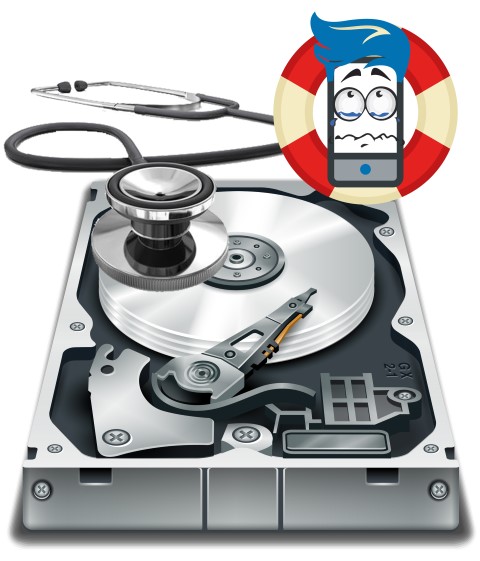
Losing your data might be more harmful than the device destruction. A new one can easily replace a damaged phone, memory card, the hard drive, but a loss of unique data – such as important documents, your beloved people photos, videos from journeys, holidays or celebrations – is unrecoverable.
That is why we try to recover data from broken hard drives, memory cards, USB pen-drives not just on Windows/ Linux and Mac OS but also on mobile phones and tablets running the Android operating system.
If your hard drive is broken, it can seem like the end of the world, but we have experience working with all known and lesser-known brands. Leading companies such as Buffalo, Western Digital, Seagate, to name a few, we can recover data from. However, the data has been encrypted; we work with Apple Mac/ iMac/ MacBook recovery, Microsoft Windows recovery, Linux recovery and other operating systems, even if it’s an external hard drive for game storage for your PlayStation or Xbox console.
Even if your hard disk seems dead, we can recover your data.
Have you got a corrupted external hard drive? Or maybe it’s installed on your computer? When it comes down to a hard drive failure, we are hard drive data recovery specialists.
Hard drives can degrade over time, especially when they’re running 24/7, so with age, the risk of data loss becomes higher, for example, CCTV camera systems that are constantly on. If you’ve dropped your laptop or external storage, it can damage the drive too. Luckily our experts can restore your lost photos and videos, lost university course work, those important files for a work presentation. Whichever brand HDD or SSD you own, our service can help. Contact us for pricing for data recovery.
We can also recover data lost on SD cards or other portable storage. SD cards are commonly used in mobile phones, as micro SD cards, in some game consoles and digital cameras. Whatever your card is used in, we can rescue the data.
Other portable storage solutions can be saved, too, not just SD cards. Maybe you have a damaged USB flash drive with critical coursework on or photos of a special day. Let our experts take a look at it for you. Prices depend on the type of device and damage.
Contact us today for pricing on your data recovery service needs. Not near us? you can send us your item from anywhere in the UK
Seagate developed the first 5.25-inch hard disk drive (HDD), the 5-megabyte ST-506, in 1980. They were a major supplier in the microcomputer market during the 1980s, especially after introducing the IBM XT in 1983. Today Seagate, along with its competitor Western Digital, dominates the HDD market. Offering a wide range of internal and external HDD/SSD storage solutions, Seagate is the sole producer of officially licensed external Hard drive storage for the Sony PlayStation and Microsoft Xbox consoles.
Western Digital Corporation (abbreviated WDC, commonly known as simply Western Digital and WD) is an American computer hard disk drive manufacturer and data storage company. It designs, manufactures and sells data technology products, including storage devices, data centre systems and cloud storage services.
Western Digital has a long history in the electronics industry as an integrated circuit maker and a storage products company. It is one of the largest computer hard disk drive manufacturers and produces SSDs and flash memory devices.
Kingston Technology Corporation is an American multinational computer technology corporation that develops, manufactures, sells and supports flash memory products and other computer-related memory products, solid-state drives. It is the largest independent DRAM memory module producer, owning approximately 68% of the third-party worldwide DRAM module market share in 2017.

A hard disk drive (HDD), hard disk, hard drive is an electromechanical data storage device that stores and retrieves digital data using magnetic storage and one or more rigid rapidly rotating platters coated with magnetic material. The platters are paired with magnetic heads, usually arranged on a moving actuator arm, which read and write data to the platter surfaces. Bits of data are arranged in concentric, circular paths called tracks. Each track is broken up into smaller areas called sectors. Data is accessed in a random-access manner, meaning that individual blocks of data can be stored and retrieved in any order. HDDs are a type of non-volatile storage, retaining stored data even when powered off. More than 224 companies have produced HDDs historically, though, after extensive industry consolidation, most units are manufactured by Seagate, Toshiba, and Western Digital.
The two most common form factors for modern HDDs are 3.5-inch desktop computers and 2.5-inch, primarily laptops. HDDs are connected to systems by standard interface cables such as PATA (Parallel ATA), SATA (Serial ATA), USB or SAS (Serial Attached SCSI) cables.
Data can be lost from many different factors, such as hard drives degrading over time from constant use and overheating, or maybe the circuit board has been damaged by a power surge or water damage. They can also fail mechanically from being dropped, meaning the motor stops spinning because the bearings have seized.
We can recover data from accidentally formatted hard drives or formatted partitions too. We are Samsung hard drive recovery specialists.
Seagate – Barracuda, Ironwolf, Skyhawk, Firecuda, Exos, Constellation ES
Toshiba
Western Digital – Blue, Black, Red, Gold, Purple
SanDisk
Samsung
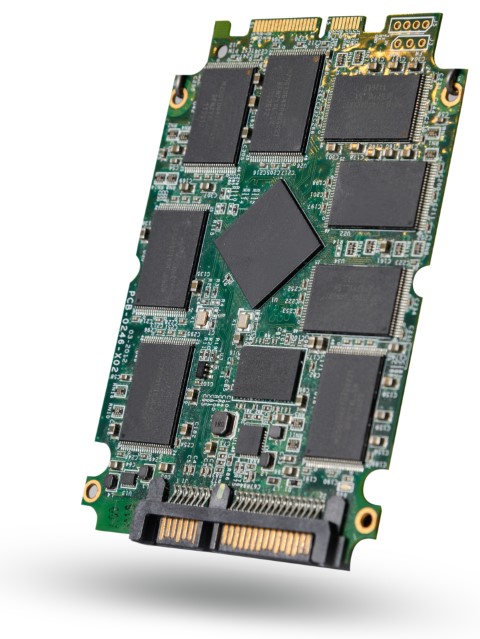
A solid-state drive (SSD) or solid-state disk is a solid-state storage device that uses integrated circuit assemblies to store data persistently, typically using flash memory and functioning as secondary storage, offering a storage capacity of up to 100TB. Compared to a standard the HDD, SSDs are typically more resistant to physical shock, run silently, and have quicker access time and lower latency. SSDs store data in semiconductor cells. And vary in their properties according to the number of bits stored in each cell, with single-bit cells being generally the most reliable, durable, fast, and expensive type, compared with 2- and 3-bit cells and quad-bit cells. SSDs based on NAND Flash will slowly leak charge overtime if left for long periods without power. This causes worn-out drives to start losing data typically after one year (if stored at 30 °C) to two years (at 25 °C) in storage; it takes longer for new drives.
SSDs can use traditional HDD interfaces and form factors or newer interfaces and form factors that exploit specific flash memory advantages in SSDs. Traditional interfaces (e.g. SATA and SAS) and standard HDD form factors allow such SSDs to be used as drop-in replacements for HDDs in computers and other devices. Newer form factors such as mSATA, M.2, U.2, NF1, XFMEXPRESS and EDSFF and higher speed interfaces such as NVM Express NVMe over PCI Express can further increase performance over HDD performance.
Crucial – MX500, BX500
Gigabyte
Intel – SSD 5 series, Youngsville, Liberty Harbor, Oroville
Maxtor – Z1
Micron – 1300, 5300, 5210, 5200, 5100
Samsung – 980 Pro, 970 EVO Plus, 970 PRO, 970 EVO, 960 PRO, 960 EVO, 870 QVO, 860 PRO, 860 QVO, 860 EVO
SanDisk – Extreme PRO, Ultra 3D, Ultra II, SSD Plus
Verbatim – Vi550
Kingston – A400

NVM stands for non-volatile memory, which is often NAND flash memory that comes in several physical form factors, including solid-state drives (SSDs), PCI Express (PCIe) add-in cards, M.2 cards, and other forms. NVM Express has been designed to capitalize on the low latency and internal parallelism of solid-state storage devices as a logical device interface. NVM Express (NVMe) or Non-Volatile Memory Host Controller Interface Specification (NVMHCIS) is an open logical-device interface specification for accessing non-volatile storage media attached via PCI Express (PCIe) bus. NVM Express allows host hardware and software to exploit the levels of parallelism possible in modern SSDs fully. As a result, NVM Express reduces I/O overhead and brings various performance improvements relative to previous logical-device interfaces, including multiple long command queues and reduced latency.
Like any storage device, an NVMe SSD will eventually fail; the only variable is when. Unlike hard drives, SSDs can’t send an audible warning that something may be going wrong. One major factor of failure is heat. NVMe is known to run at scorching temperatures, and without adequate cooling, this can cause data loss problems. Another factor is overwriting data which can wear out the drive even quicker. Manufacturers send out firmware updates which sometimes can cause the drive to have a “failure date” With NVMe, and it’s imperative to seek help as soon as you notice a problem specifically with read writes issues; using a hardware monitor app will save a lot of stress down the line, the sooner you bring it to us the greater the chance of data recovery.
Verbatim – Vi3000
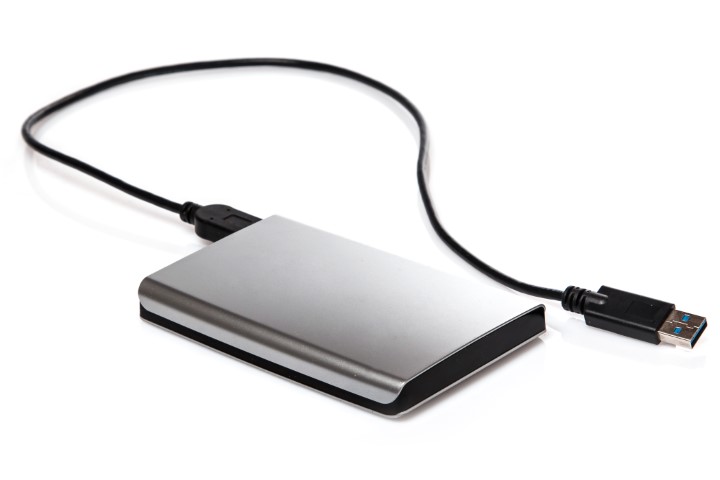
External Hard Drives offer the convenience of added storage without having to dismantle your device.
External hard disk drives typically connect via USB, meaning they are cross-device useable, though devices using USB 2.0 interface generally have slower data transfer rates than internally mounted hard drives connected through SATA. Plug and play drive functionality offers system compatibility and features large storage options and portable design. External hard drives can be either standard HDD, SSD or NVMe.
The only major negative to external drives is that they are more susceptible to accidental damage. Being portable, they’re more prone to dropping, which can cause internal mechanical failure or water damage. Drive integrity issues can also occur from not removing the device correctly from the system connected to or sudden power surges.
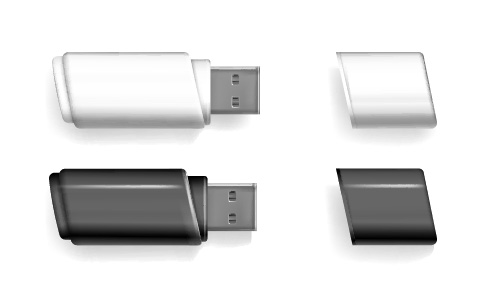
Portable Flash storage is a popular medium for keeping important files to hand or quick transfer of files between two devices. Commonly know as Memory sticks, flash drives, thumbsticks or key drives, they come in many shapes and sizes and is a data storage device that includes flash memory with an integrated USB interface. Now capable of storage capacities of up to 2TB and are thought to last between 10 to 100 years depending on use. The most common household names for USB storage are Sandisk, owned by Western Digital, and Kingston Technology.
As with External hard drives, the risk of damage is higher than built-in storage, but the small size of memory sticks makes them easier to break or drop in water accidentally. Although internally sturdy enough to withstand a fall, they’re not so tough against being stood on.
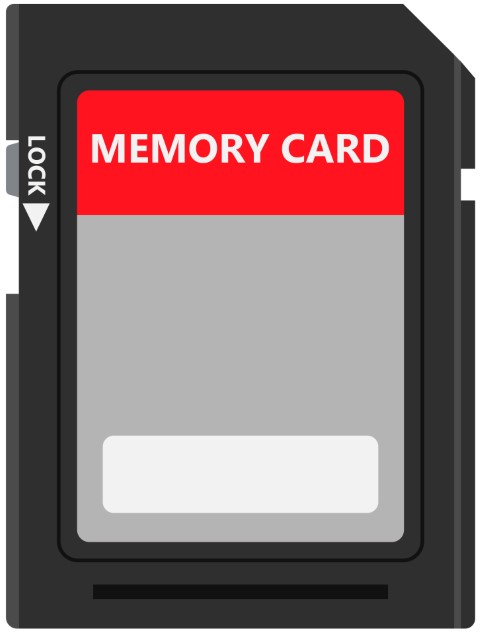
Memory cards are ultra-lightweight flash storage devices. These compact storage solutions are used globally in everyday devices, including mobile phones, digital cameras, sat navs, games consoles and more. Over the years, there have been many variations on the memory card, meaning older devices didn’t have interchangeable storage, with companies like Sony making flash memory exclusively for their products. This all began to change in 1999 when Secure Digital, SD, came together to create the standard memory cards we all know today. Secure Digital, SD, is a collaboration between Sandisk, Panasonic (Matsushita), and Toshiba, putting in the place industry standard. The Micro SD card is most commonly useable on maybe devices but comes with an adapter to fit MMC sized slots, such as those found on laptops and in digital cameras.
Due to their minuscule size, they need to be treated very delicately. Not safely unmounting from a PC or Laptop can cause bad blocks to which data cannot be written to, also constantly removing them from one device to another can damage the contacts. We can recover data in those situations or if it has been accidentally formatted or if your device has asked to format the drive due to malfunction.

Check out our MacBook Data Recovery Experts.
Apple Inc. is an American multinational technology company founded in 1976 that designs, develops, and sells consumer electronics, computer software, and online services. It is considered one of the Big Five companies in the U.S. information technology industry. Its hardware products include the iPhone, the iPad tablet computer, the Mac personal computer, the iPod portable media player, and the Apple Watch smartwatch and more. Apple’s software includes iOS, iPadOS, macOS.
The first Mackintosh system, the Apple 1, started production in ’76, which started the pathway to the company we all know today. It wasn’t until the release of the G3 in 1998 that Apple started becoming a household name. In 2001, Apple released Mac OS X, a modern Unix-based operating system later rebranded to simply OS X in 2012 and then macOS in 2016. The current version is macOS Big Sur, released on November 12, 2020. Data on Mac OS is stored on formatting different to Windows and Linux systems, but we can recover data from this none the less. When your Time Capsule internal disk needs repair, you couldn’t have hit better.
In 2007 the much-anticipated iPhone was released after 3 years of development. A year later, the iPhone 3G paved the way for modern-day smartphones. In 2010 Apple released the first iPad, using the same iOS developed for their iPhones but for a 9.7″ screen which later became iPadOS.
Apple has made it easier than ever to store backups of your data on iCloud so that you can quickly access it if you lose your data on any device, but not everybody uses this feature. If you lose your data through malfunction or failure, we can help restore your data whether it’s an iPhone, iPad, iMac, Mac mini, MacBook Pro, or MacBook Air (We are one of the Best MacBook Air data recovery specialist in Dorset) running either iOS or macOS. Trust our Mac Data Recovery Specialists.
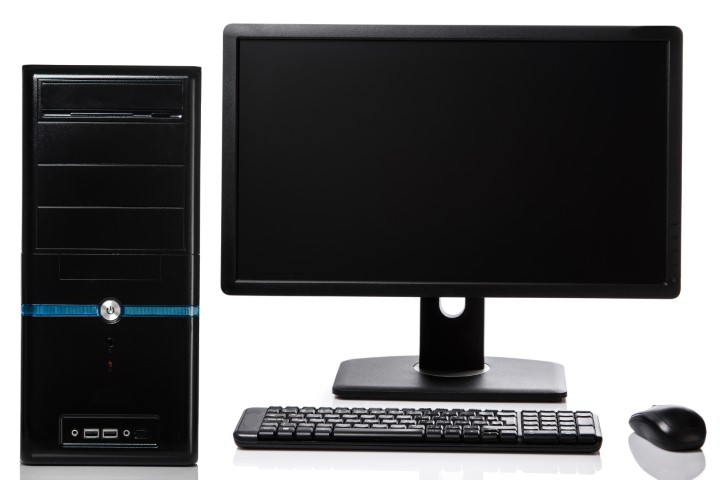
The Personal Computer or PC is essential for every household and workplace. Intel created the world’s first commercial microprocessor chip in 1971. It was not until the personal computer (PC) success that this became its primary business, and thus, in 1981, IBM was bringing the desktop computer to the home user.
An all-in-one computer (also known as single-unit PCs) is a desktop computer that combines the monitor and processor within a single unit. A separate keyboard and mouse are standard input devices, with some monitors including touchscreen capability. The processor and other working components are typically reduced in size relative to standard desktops, located behind the monitor, and configured similarly to laptops.
Computers have come along way since the days of the Commodore, Sinclair and Amstrad; with constantly evolving technology, the Personal Computer we know today is very different. We now have higher demands for data storage in larger capacities; from what was unthinkable back then, we now store hundreds of gigabytes of data on our PCs. This greater need for storage means when our Hard drive fails, we can lose so much. All our family photos, university course work, documents for work, music and videos can be gone in an instant. But all is not lost! We offer data recovery service on all PC brands such as Lenovo, HP, Compaq, Dell, Asus, Acer, and Samsung. We recover data from all types of HDD, SSD, RAID and NVMe regardless of which operating system you use to store your data. Come to us if you are looking for a PC computer data recovery specialist.
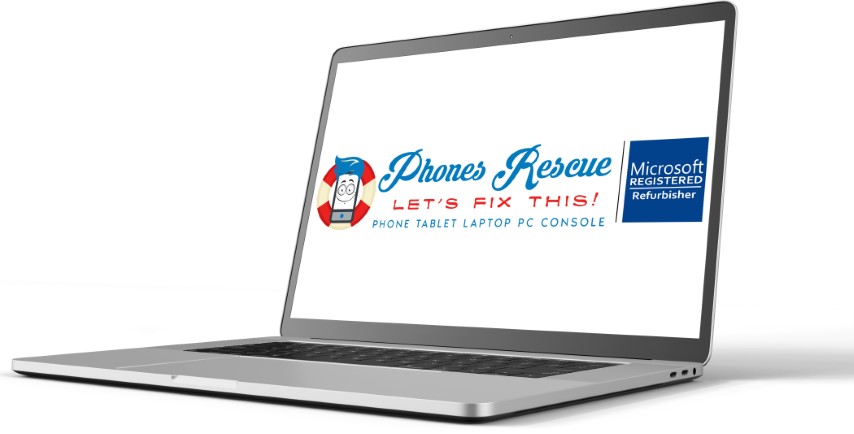
A laptop computer is designed for portability with “clamshell” design, where the keyboard and computer components are on one panel, with a hinged second panel containing a flat display screen. To save power, weight and space, laptop graphics cards are in many cases integrated into the CPU or chipset and use system RAM, resulting in reduced graphics performance when compared to a desktop machine. For this reason, desktop computers are usually preferred over laptops for gaming purposes. The smaller size and portability of a laptop makes them indispensable for many people, including university students and office workers, giving them the ability to have all their information to hand at any time.
Phones Rescue is a laptop data recovery specialists. We offer data recovery service on all laptop and PC brands such as Microsoft Surface, Samsung, Sony Vaio, Lenovo, Hitachi, HP, Compaq, Alienware, Dell, Asus, Toshiba and Chromebook and many more. We recover data from all types of built-in HDD, SSD, RAID and NVMe regardless of which operating system you use to store your data. We are a Toshiba data recovery specialist and any other brand.
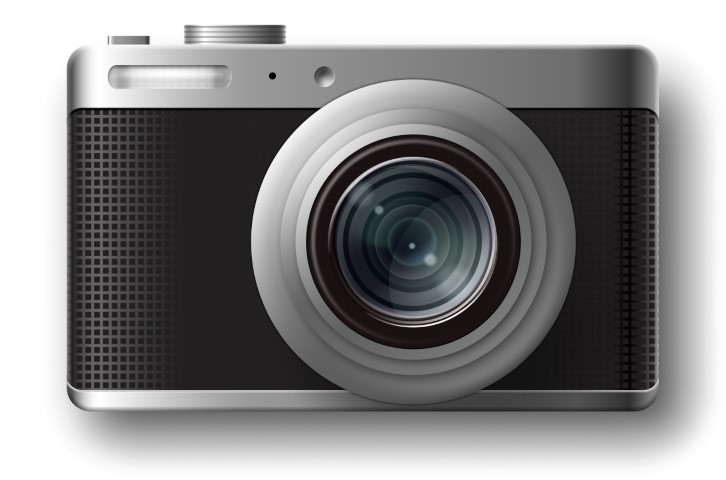
Many digital cameras store image data in flash memory cards or other removable media. Most stand-alone cameras use SD format, while a few use CompactFlash or other types. In January 2012, a faster XQD card format was announced. In early 2014, some high-end cameras have two hot-swappable memory slots. Photographers can swap one of the memory cards with camera-on. Each memory slot can accept either Compact Flash or SD Card. All-new Sony cameras also have two memory slots, one for its Memory Stick and one for SD Card, but not hot-swappable.
The JPEG is the most common file format for storing images. Other file types include Tagged Image File Format (TIFF) and various Raw image formats.
Many cameras, especially high-end ones, support a raw image format. A raw image is the unprocessed set of pixel data directly from the camera’s sensor, often saved in a proprietary format. Adobe Systems has released the DNG format, a royalty-free raw image format used by at least 10 camera manufacturers.
Fortunately, due to the removable storage, dropping a digital camera shouldn’t affect your photos and videos, but faults with the camera can damage the removable storage. Some cameras do have onboard flash storage; although rare, dropping one could result in data loss. Either way, we can take a look at recovery for you.
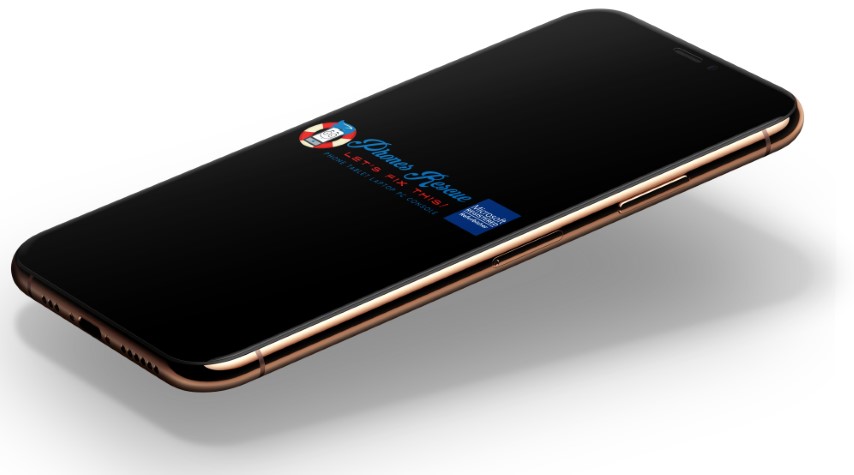
Whilst there are many smartphone manufacturers, most handsets run on a custom user interface (UI) built upon the Android operating system. Manufacturers, such as Samsung, Sony, Huawei, all customised the UI. Though there are many other platforms out there, Android is the most common alternative to iOS. As popular as it is, all handset firmware can suffer failure, resulting in a clean install on your device, which will wipe all your personal data. But even after a fresh install, it can still be possible for us to retrieve the data.
Most Smartphones use removable storage, now universally the micro SD card, though it is becoming more common for phones to remove removable storage in favour of high capacity flash storage. Even if you have the option for expanding your phone memory, some data may still be stored on the handset itself, and after a mechanical or firmware fault, you can lose your data. We can recover data from mobile phones no matter who the manufacturer. Samsung Galaxy, Huawei, Nokia, Sony, HTC, LG, Motorola, Google, Xiaomi, the list goes on. We offer a tablet data recovery service as well. Contact our tablet data recovery experts today.
All your data, photos, videos, documents are stored and transmitted as a series of ones and zeros, also known as a binary digit but more commonly known as a bit. In most computers and programming languages, when a bit within a group of bits, such as a byte or word, is referred to, it is usually specified by a number from 0 upwards corresponding to its position within the byte or word. However, 0 can refer to either the most or least significant bit depending on the context. The bit represents a logical state with one of two possible values. In the example of pictures, each picture is broken down into tiny elements known as pixels. For a computer to store the information, each pixel represented by a binary value (bit). Every piece of data is comprised of multiple bits, which in tail means storage needs have increased. An easy way to visualise this is the convenience of a floppy disk and how there use is obsolete now as the number of bits, or collectively bytes, needed are too great for data that one picture would not store on there now. A typical floppy disk would hold 11,200,000 bits, 1.4MB of data. Bringing us to the age of gigabyte storage. There are 8,000,000,000 bits in 1 gigabyte, so you can see the amount of data actually stored on a 64GB phone is tremendous.
Do you need help with any other device or different kind of defect? Contact us! We will advise and help you, and you will be glad of your device again.
On our YouTube channel you will find videos about our promotions and what our company does. Subscribe to stay up to date.
On our Twitter account you will get short information about our company.
Get to know us better. Go to our Instagram profile and see photos of our company.
On our Google My Business profile, you’ll find a lot of useful bits of information, as well as read opinions about us. If you are already our customer, we will be happy to hear your opinion about us.
Data Recovery Experts Bournemouth Christchurch Poole
Professional Hard Drive, HDD, SSD, Memory Card, Memory Stick, Phone, Tablet Data Recovery Specialists
